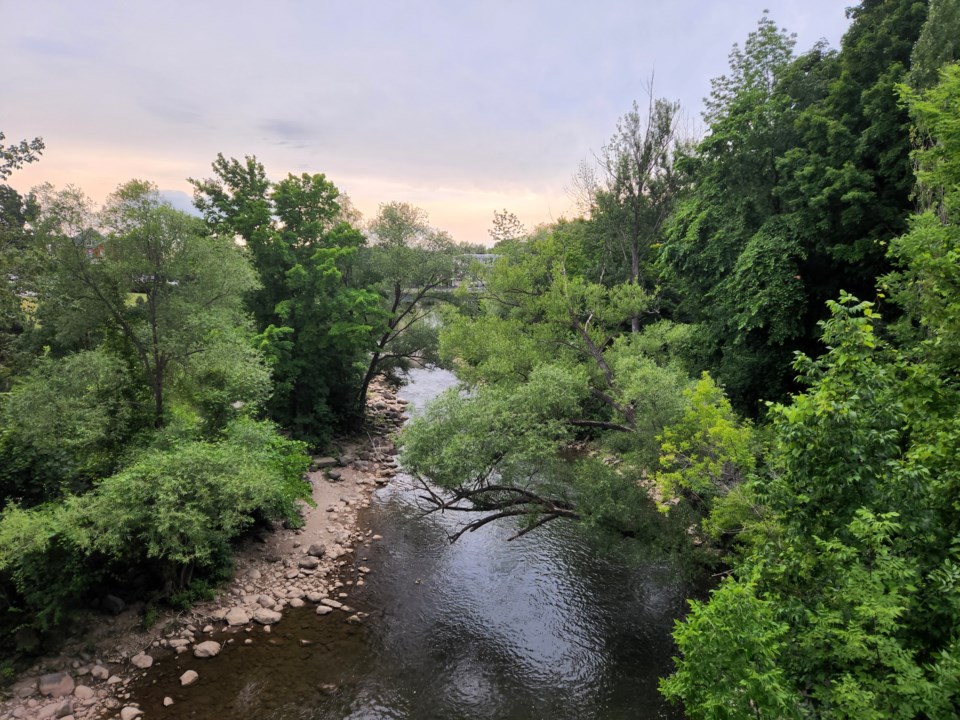The Blue Mountains council has received a mixed bag of support, opposition and concern about a proposed town tree preservation bylaw.
Council held a public meeting about the draft bylaw on July 11 and the council chambers were packed with residents who expressed a range of opinions about the proposed bylaw.
The town has been working on a tree bylaw for several years. The proposed bylaw would apply only in the designated settlement areas of the town, it would apply to lots only a half-hectare or more in size and a permit would only be required if a property owner was removing five or more trees at a time or a tree with a minimum diameter of 30 cm.
Opinions expressed by speakers at the meeting ranged from outright opposition to the bylaw, to strong support for the concept of municipal regulations for the removal of trees in the community.
Deputy Mayor Peter Bordignon re-iterated his concern that the draft bylaw was casting too wide of a net. Bordignon said the town set out to create controls to prevent clear-cutting of trees on vacant properties to be developed. Now, the bylaw would apply to all properties.
“I don’t see why we’re taking such a shotgun, wide net approach to this one,” said Bordignon. “If you’re going to be building or developing land, that is where the tree bylaw comes into place. We’re not concentrating on that as much as we should be.”
The deputy mayor said he was concerned about the scope of the bylaw creating unintended consequences. He hearkened back to the development of the short-term accommodation bylaw, which, as initially written, could have prevented a local hotel from renting its rooms.
“We’re going to miss some things we want to capture,” he said.
CAO Shawn Everitt said an enormous amount of time and effort has been spent on the draft tree bylaw and staff now needs input from council and the broader community.
“This is why we wanted to get this in front of council at a public meeting,” said Everitt. “The need was to get this in front of council to see if we were on the right track. We’re not going to have all the answers today.”
Coun. Jim Uram suggested the bylaw apply to smaller lot sizes.
“Other municipalities don’t differentiate on lot size. A tree is a tree and it’s part of the canopy,” said Uram.
Council received numerous written comments, both in support and opposition to the bylaw. Many of the written comments inquired as to whether or not the Castle Glen development property was included in the designated settlement areas of the bylaw. Town staff later confirmed that the town’s Official Plan designates Castle Glen a settlement area.
Local resident Sally Leppard called on council to make the bylaw tougher.
“Generally, I’m very supportive of it,” she said. “Put a bit more teeth in it. Instead of saying ‘may’ say ‘must’ or ‘shall.”
Kim Harris Gardner was concerned about the scope of the bylaw.
“I thought the focus would be development. There’s not a lot of appetite for it among the ratepayers,” she said.
Local apple grower John Ardiel called the draft bylaw: “purely an insult in the highest degree” and “overreaching and wrongful.”
He said it wasn’t necessary for the town to have a bylaw that governs how residents manage their own private properties and he expressed concerns that the bylaw could easily be amended to cover the entire town. Ardiel said the cost of a tree removal permit would be exorbitant.
“This is the time to take a more balanced approach,” said Ardiel.
Julia Hinds also questions the scope of the bylaw.
“I’m failing to understand how you can take over other people’s resources. That’s a huge overreach,” she said.
Bruce Harbinson of the Niagara Escarpment Corridor Alliance expressed support for the town’s approach.
“The tree canopy is a huge, huge item of importance to your residents,” said Harbinson. “We need to be a lot more creative about how we approach these things.”
Pamela Spence said trees have a positive impact on the community, the environment and the mitigation of climate change.
“I am here to speak for the trees. It’s critical we understand trees have hidden powers,” said Spence, who suggested a public education program about the bylaw and called on the town to avoid high permit fees. “I believe the fees should not be punitive, but the penalties should be.”
Council made no decisions on the bylaw at the meeting and staff will return in the future with a follow-up report based on the comments received.



